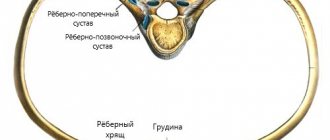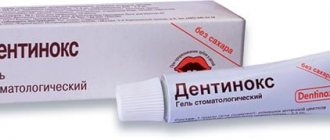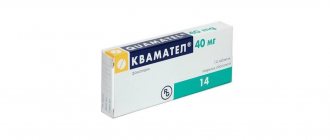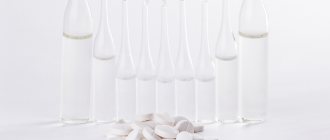Indications for use of Alaminol
According to the instructions, Alaminol is used for: disinfection of products used for medical purposes, for pre-sterilization cleaning of endoscopes and accompanying instruments, for disinfection of premises, surfaces, furniture, equipment, supplies, dressings, napkins, disposable linen before disposal, patient care items . Alaminol solution is also successfully used for cleaning in catering, medical, and public service institutions during seasonal epidemics. With regular use, Alaminol prevents the proliferation of mold fungi in residential and non-residential premises.
Cost of the product
The concentrate is sold at points of sale of disinfectants and is available for purchase online on retail sites. Retail prices for “Alaminol” 1 liter start from 350 rubles. Wholesale customers receive discounts.
"Alaminol" is indicated for all types of disinfection, cleaning, and pre-sterilization cleaning. The disinfectant can be used against SARS-CoV-2. It contains a compound recommended by Rospotrebnadzor for the prevention of coronavirus (paragraph 5 of the letter with requirements for disinfectants).
Do you disinfect with Alaminol? Comment, repost the instructions to your friends on social networks, add the page to bookmarks so that it does not get lost. All the best.
First aid for Alaminol poisoning
If the product gets into the stomach, you must immediately take 10-20 crushed tablets of activated carbon, washing them down with several glasses of drinking water.
If Alaminol solution gets on the skin, it is necessary to rinse the affected area thoroughly with running water and then apply it generously with an emollient cream.
Quite often the product gets into the eyes, therefore, when purchasing Alaminol, it is advisable to also acquire a 30% solution of sodium sulfacyl. This is because the manufacturer recommends in such situations after a thorough 10-15 minutes. After rinsing with running cold water, drop 1-2 drops of medication into the eyes.
How to use alaminol - instructions for use
Disinfection of manicure instruments is carried out manually in plastic, enameled (without damaging the enamel) containers, closed with lids.
The temperature of working solutions must be at least 18°C.
To carry out these processes, the products are completely immersed in the working solution of the product. The channels and cavities of the instruments are filled with a solution, avoiding the formation of air pockets.
Tools with locking parts are immersed open, having previously made several working movements with them in the solution for better penetration of the solution into hard-to-reach areas of the tools in the area of the lock. Detachable products are immersed in the solution in disassembled form.
The thickness of the mortar layer above the products must be at least 1 cm.
Attention! It is advisable to completely immerse the instruments in the working solution of the product immediately after their use (without allowing the contaminants to dry out), ensuring that visible contaminants are removed from the surface using cloth napkins; the channels and cavities are thoroughly washed with the solution using a syringe or other device.
Used wipes are disposed of in a separate container with a disinfectant solution and then disposed of.
After the end of exposure in the working solution (the exposure time is usually 1-2 hours), the products are removed from it and washed from the remnants of the product with running drinking water for 5 minutes.
Analogues of the disinfectant Alaminol
In practice, other means besides Alaminol are also used for disinfection. Here is a list of them and instructions on how to use the drugs:
- Neutral anolyte. It is a clear or colorless liquid with a chlorine odor. It works well in the fight against viruses and bacteria, and has anti-mold properties. The diluted solution is used only once and retains its properties throughout the day;
- Precept - tablets in granules. To prepare the solution, 1 tablet (2.5 g) is dissolved in 2.5 liters of water. The shelf life of diluted precept in a closed container is 5 days. The product has a powerful effect on the pathogens of HIV and hepatitis B.
- Septabic and Virkon are high quality products. They have proven themselves in the fight against viruses and bacteria. Widely used for disinfection in medical institutions: premises, instruments, equipment, furniture. In practice, 1% and 2% solutions of Vircon and 0.1% are used; 0.005% and 0.025% septabic. For preparation, the powder is diluted with distilled water. The disinfectant solution is stored for 1 day.
How to use?
Using Alaminol is quite simple. Carefully place the used instruments into a container with concentrated disinfectant, diluted to the required concentration, and leave them there for 1 hour. After this time, they should be removed, washed with water and dried thoroughly. This solution (preferably at a concentration of 1-2%) can also be used for surface treatment. This will help reduce the risk of developing fungal infections and other pathologies caused by pathogens.
Surfaces should be treated with the rags used for this purpose. Many manicurists note that after such treatment a special smell appears in the office, which they associate with cleanliness.
What is disinfection of manicure instruments?
The stage of removing nail dust and pathogenic microbes is called disinfection of manicure equipment. The procedure is typical for such reusable tools as scissors, files, and wire cutters. It consists of soaking in a special diluted disinfectant composition for 1 hour.
For these purposes, Brilliant, MultiDez, Alaminol, Optimax and other disinfectant compounds are used. Liquid diluted with water is poured into a special container, and then the equipment is lowered into it. At the end of the procedure, the manicure instrument is thoroughly rinsed with running water, and then dried in air and sterilized.
Alaminol for manicure tools
According to sanitary rules, disinfection should be carried out after each client with an entry in the log book. It is possible to disinfect your own set of tools at home: to do this, it will be enough to leave it for 30 minutes. in ethyl alcohol, and then in an oven at temperatures up to 250 ℃.
The difference between disinfection and sterilization is as follows:
- performed directly while using protective equipment in the form of masks, goggles and gloves;
- applies not only to the manicure table, but also to the device’s attachments, equipment, baths, polymerizing lamps, chairs, couches and other tools;
- using concentrates of liquid consistency without the use of technology;
- removes major microbes.
This process is preliminary, after which sterilization occurs, thanks to which you can get rid of spores, fungi, viruses and bacteria.
Standards according to SanPiN
The following list shows the norms of procedure according to SanPiN:
- The purpose of this procedure is to remove pathogenic microorganisms and prevent their proliferation on the surface of the working tool.
- Before performing any procedure, the master must wash his hands with soap and then treat them with an antiseptic.
- The baths are disinfected by immersing them in a disinfectant composition.
- When performing disinfection, it is necessary to use solutions that will not harm health. Compositions with hazard classes 1 and 2 are prohibited.
- General cleaning of the work area must be carried out using disinfectant compounds, followed by wiping the walls, baseboards, windows, flooring and doors.
- Disinfection of the surface of furniture and equipment should be performed up to 2 times during the day.
- Disinfection is carried out after people stop visiting, and it will need to be carried out in a place specially designated for this purpose.
- The disinfection liquid must be stored in a hermetically sealed container, which is marked with the date of manufacture, name and shelf life.
- Equipment made of metal is disinfected by completely immersing it in the disinfection composition for a period of 30 to 60 minutes.
- On the container in which the treatment is carried out, it is necessary to put an inscription about its purpose, as well as the concentration of the solution. The container must be provided with an airtight lid.
- The instrument is processed by immersing it in a disinfectant solution.
- Hand rests and oilcloth pillows are also treated with a disinfectant solution after each client.
- Treatment is carried out in case of possible viral hepatitis.
- Hand wipes should only be disposable and do not get wet. They must be disposed of after each use.
Procedure time
To disinfect working manicure tools, the procedure should continue for 60 minutes. Also, the time period allotted for processing equipment directly depends on the concentration of diluted Alaminol.
Alaminol - what is it?
Some clients do not understand what this product is and what it is used for. Alaminol is an antiseptic. This product very effectively kills germs, bacteria, viruses, fungi. One of the main advantages is that it is practically safe even in contact with mucous membranes and open skin. This characteristic, quality and cost of the product make it indispensable for the disinfection of cosmetic and medical rooms and instruments.
Pharmacological action of Alaminol
Alaminol is an antiseptic that can be used for disinfection in:
- Dentistry;
- Medical and preventive institutions;
- Hairdressing salons;
- Beauty salons;
- Children's institutions;
- Hotels;
- Canteens.
Alaminol solution during disinfection is effective against:
- Mycobacterium tuberculosis;
- Fungi of the genus Candida;
- Most bacteria, including various pathogens of nosocomial infections;
- Dermatophytes;
- Various viruses, including entero-, polio-, rotaviruses, acute respiratory viral infections, HIV infections, herpes, pathogens of parenteral viral hepatitis.
Alaminol
Disinfectants in dentistry
Disinfection combined with PSO
- Alaminol.doc (214.00 KB)
- Alaminol 2.pdf (8940.44 KB)
- 1 l407.00 RUR
- 3 l932.00 RUR
Alaminol – antiseptic, disinfectant
Pharmacological action Due to the presence of glyoxal and alkyldimethylbenzylammonium chloride in Alaminol, the drug is actively used by doctors and employees of beauty establishments to identify and eliminate bacteria, ARI pathogens, and Candida fungi.
Release form Alaminol is a transparent solution with a liquid consistency and a barely perceptible, mild aroma.
Indications for use According to the manufacturers, Alaminol is used as an antiseptic drug. It is actively used in dental offices, medical institutions, hotel complexes, rooms where children live, and buffets. Alaminol solution is often used to disinfect medical devices, treat kitchen units, and furniture surfaces during general cleaning. If you use a product such as Alaminol constantly, you can prevent the occurrence of fungus and bacteria in the house.
Contraindications None
Instructions for use Depending on the needs and area of application, the Alaminol solution can be different: from 1 to 10%. Based on this indicator, the amount of water required to dilute the drug changes. So, if the Alaminol solution is 1 percent, then 1 liter of water accounts for 10 ml of the product, if 1.5 percent - 15 ml, 5 percent - 50 ml, and so on.
To prevent the appearance of bacteria and a number of other infections (with the exception of tuberculosis), use 1 percent Alaminol. It is used when processing tools, furniture surfaces, cleaning houses, offices and other premises. 3 and 5% products are treated with the product, which are later used to combat viral infections, candidiasis, and symptoms of tuberculosis. The use of Alaminol 5, 8 and 10 percent involves immersing the equipment in the required solution. It is used to process dental and a number of other medical instruments.
Before diluting Alaminol, you must wear rubber gloves to prevent it from coming into contact with your skin. Avoid contact of the drug with the eyes. According to the instructions, Alaminol can be used many times throughout the year. The exception is a change in the color and structure of the drug.
Storage method: Diluted Alaminol should be stored separately from other medical products, and containers with the prepared solution should be kept closed. In a closed package, the drug can be stored for 12 months. After dilution, it must be used within 10 days from the date of first use.
Side effects According to Alaminol's instructions, if it comes into contact with the skin, an allergic reaction may occur in the form of skin irritation or slight redness. To avoid these consequences, the solution must be rinsed with water and applied with a moisturizer. If Alaminol enters the body, you should immediately drink at least 10 tablets of activated carbon and wash them down with plenty of water. If Alaminol solution gets into your eyes, rinse them with warm water and apply eye drops. Sodium sulfacyl is ideal for these purposes.
Manufacturer: NIOPIK
Benefits of using Alaminol
- This product does not pose any health hazard. Even its vapors are harmless. In case of contact with skin, you only need to rinse it with plenty of water.
- It works quite effectively, since its use for medical instruments is approved.
- Despite its aggressiveness as a chemical substance, it interacts with metal as gently as possible.
- There is no fixing effect.
- The working solution can be used repeatedly.
- Disinfection time ranges from 60 minutes. The main methods of disinfection are immersion and rinsing.
- Alaminol is affordable.
- It is able to cope with fungal infections (dermatophytosis, candidiasis), viruses, bacteria (including tuberculosis pathogens), and mold fungi.
- Has cleaning properties.
- If this substance is stored in a dark, thick glass bottle in a dark and cool place, the bactericidal effectiveness will remain for more than a year.
- The prepared solution can be used for up to ten days or until it becomes cloudy and darkened.
Modes of use of Alaminol Plus
| BASIC MODES | % by means | % by DV in working solutions |
| Wiping1 surfaces (bacteria, excluding tuberculosis) | 0.1%-60min11 similar | Time Aldehyde HOUR Amount DV 60 0.0066% 0.03% 0.0366% |
| Wiping1 surfaces (viruses no less resistant to hepatitis B virus) | 0.5%-60min17 similar | Time Aldehyde HOUR Amount DV 60 0.033% 0.15% 0.183% |
| Wiping1 surfaces (tuberculosis) | 1%-120min; 1.5% -90min; 2%-60min7 similar | Time Aldehyde HOUR Amount DV 120 0.066% 0.3% 0.366% 90 0.099% 0.45% 0.549% 60 0.132% 0.6% 0.732% |
| Disinfection2 sanitary facilities equipment (viruses, no less resistant hepatitis B virus) | 0.5%-60min (twice wiping or irrigation with an interval of 15min)19 similar | Time Aldehyde HOUR Amount DV 60 0.033% 0.15% 0.183% |
| Disinfection3 of linen (viruses no less resistant to hepatitis B virus) | 2%-120min3 similar | Time Aldehyde HOUR Amount DV 120 0.132% 0.6% 0.732% |
| Disinfection4 of tableware (viruses no less resistant to hepatitis B virus) | 10%-120min (anthrax regimen)3 similar | Time Aldehyde HOUR Amount DV 120 0.66% 3% 3.66% |
| Disinfection of medical waste of group B (used dressings, tampons, etc.) | 2%-120min4 similar | Time Aldehyde HOUR Amount DV 120 0.132% 0.6% 0.732% |
| Disinfection of medical devices combined with PSO (viruses no less resistant to hepatitis B virus) | 1%-60min; 1.5% -30min; 2%-15min18 similar | Time Aldehyde HOUR Amount DV 60 0.066% 0.3% 0.366% 30 0.099% 0.45% 0.549% 15 0.132% 0.6% 0.732% |
| Disinfection of medical devices not combined with PSO (viruses no less resistant to hepatitis B virus) | 1%-60min; 1.5% -30min; 2%-15min11 similar | Time Aldehyde HOUR Amount DV 60 0.066% 0.3% 0.366% 30 0.099% 0.45% 0.549% 15 0.132% 0.6% 0.732% |
| PSO | Medical devices without cavities, channels, locks: 0.3% -15 min; Medical devices with locks, cavities, channels: 0.5% -20 min1 similar | Time Aldehyde HOUR Amount DV 15 0.0198% 0.09% 0.1098% 20 0.033% 0.15% 0.183% |
| Sterilization | — | — |
| TLD | — | — |
| Disinfection of skin | — | — |
| Note: 1 — solution consumption for one-time wiping of surfaces is 100 ml/m2; 2 — solution consumption for one-time wiping of equipment 200 ml/m2; 3 — solution consumption 5 l/kg of dry laundry; 4 — solution consumption 2 l/set of tableware | ||
| SPECIFIC MODES | ||
| Disinfection of incubators | — | |
| Disinfection of surfaces against mold | 5%-120 min (twice wiping with an interval of 15 min, the total rate of solution consumption for double wiping is 400 ml/m2) | |
| Air disinfection | — | |
| Disinfection of dialysis equipment | — | |
| Disinfection of food egg shells | — | |
| Urine disinfection | — | |
| Blood disinfection | — | |
| Disinfection of sputum | — | |
| Disinfection of fecal-urinary mixture | — | |
| Disinfection of feces | — | |
| Disinfection of vomit | — |
Special instructions for Alaminol
In cases of leakage of Alaminol solution or concentrate, it is necessary to add a large amount of water to the spilled part of the product, or adsorb it with absorbent substances - sawdust, sand, rags or silica gel, and then send it for disposal. It is important to use rubber gloves, an apron and boots, goggles and a universal respirator.
The product can only be discharged into the sewer in a diluted form; its contact with sewage or surface water should be avoided.
Where can I buy it and how much does it cost?
The cost of 1 liter of Alaminol depends on the manufacturer, supplier and container volume. You can purchase the product at pharmacies and medical equipment stores. Nowadays, even in the largest pharmacy chains, such as Samson-Pharm, Alaminol is rarely found. An alternative is to purchase the product in online stores. Alaminol is sold on the websites: piluli.ru, dezreestr.ru, dezniopik.ru. The price for 1 liter of concentrate ranges from 139.33 rubles. up to 490 rub. (the price is indicated at the time of writing and may change in the future).
- Cocoa during pregnancy
- Primer for face
- Tomato salad for the winter
Storage conditions and periods
The antiseptic must be stored in a dry and dark room at a temperature no higher than 35°C and a relative humidity of no more than 75%. Do not expose it to heating equipment or direct sunlight. Failure to comply with storage conditions may lead to deterioration in quality and loss of disinfectant effect. The bottle with the concentrate must be tightly closed with a screw cap to avoid volatilization of chemically active substances. It should be taken into account that the product freezes at temperatures below -5°C, but after defrosting it retains its beneficial properties.
The date of manufacture and end use is indicated on the label on the back of the container. The shelf life of the drug is 1 year, subject to storage rules. A 1-10% solution prepared from concentrate can be used for 10 days.
How to dilute Alaminol?
Detailed instructions on how to dilute Alaminol were developed by the Research Institute of Disinfectology.
Before use, the concentrate is diluted with drinking water in plastic, enamel or glass containers. It is important to carry out the process with thick rubber gloves and avoid getting the product on the skin, eyes or inside.
To use Alaminol for antiseptic treatment, dilute the concentrate to 1-10% solution. To obtain a 10% solution, place 100 ml of concentrate in 1 liter of drinking water, 8% solution - 80 ml of the product in 1 liter of water, and so on.
Since the prepared Alaminol solution can be used repeatedly for 10 days, it is important to ensure that the containers in which it is contained are tightly closed and stored separately from food and other medications.
After working with the solution, the manufacturer recommends thoroughly washing your hands and face with soap.









